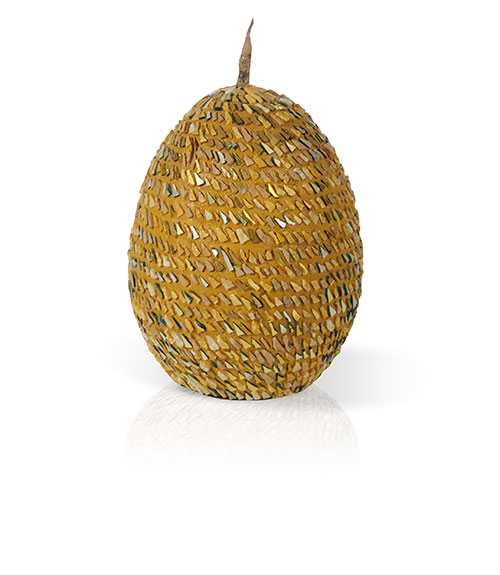FELICE
NITTOLO
MEMORIE
PREZIOSE /
KOSTBARE ERINNERUNGEN
18 marzo – 1 maggio 2022
Städtischen
Galerie
im Kulturhof Flachsgasse
Speyer – Germania
Vernissage venerdi 18 marzo ore 18,00
Saranno presenti il sindaco Monika Kabs ed il direttore
della galleria Franz Dudenhöffer
Comunicato stampa
Locandina
Pieghevole

Precious
memories
“Memory is the only paradise from which we can never be
evicted”
Johann Paul Friedrich Richter
The words of the German writer Jean Paul guide us in
discovering the artistic activity of Felice Nittolo.
This selection of his works bears witness to their
creator’s vivacity and to the way that still today –
after so many artistic seasons – this force contrives to
permeate his creative progress in the rediscovery of
memory.
In his workshop, the artist (like a modern Efesto) uses
a small hammer and chisel to give life to innumerable
precious coloured tessere. The use of mosaic is
Nittolo’s way of describing a memory, an emotion, a
profound narrative.
The tessere interact in an admirable manner in weaving
relationships which open the way to new possibilities,
in addition to those which characterised them in other
periods and with different aspirations. It is from this
starting point that Felice Nittolo’s work arises and
takes shape.
Works like Campo di Grano (The Cornfield), Brani di
Poesia (Scraps of Poetry) and Scrittura di Pietra (Inscribed
in Stone) bring to life a repeated motif which the
artist has frequently expressed as ‘Mediterranean’. The
Latin derivation of ‘Mediterranean’ is ‘among the lands’
and thus the symbol can bring to mind a stalk of wheat
grown on a hillside, the verses of a poem among the
pages of a book or a phrase engraved among our
recollections
The artist chooses to follow various pathways and thus
when the absence of tessere becomes a presence, he
contrives to recall a vanished time, glorious and
splendid. There remains on the sackcloth a memory, a
richly suggestive concept which exalts that which a
first glance might seem to be missing or incomplete.
In the various versions of the Vestigia series, Felice
Nittolo is not making a simple act of subtraction; on
the contrary, his action becomes a symbol of memory of
the presence.
It is true that these traces and these vestiges become
contemporary relics without legendary fame but they are,
in apparent contradiction, full of meaning: to quote the
words of Marc Augé, “a reality which recalls a more or
less undefined past”.1
That which Nittolo has achieved through his work is a
journey in time through the collective memory in its
appeal to colour. The pigments used by the artist become
ambassadors of an archetypical stroll among the
aesthetic conventions of the past. It is enough to
contemplate the series ofMemorie di Bisanzioand
Vestigia, impronte; the nuances of blue, green and gold
are surely in direct homage to the mausoleum of
GallaPlacidia in Ravenna, where the artist has lived and
worked since the late sixties.
That proposed by the artist is an intense offering, rich
in details, where the works appear to
have actually suffered the ravages of time – a conscious
testimony of a period of the past which becomes the
present.
Felix Nittolo ennobles time. Facing his work, we are
overcome and disoriented but then the reordering of our
own memories - of our own most precious memories - comes
to our aid and invites us tosubmerge into the
rediscovery of our own past.
Riccardo Betti